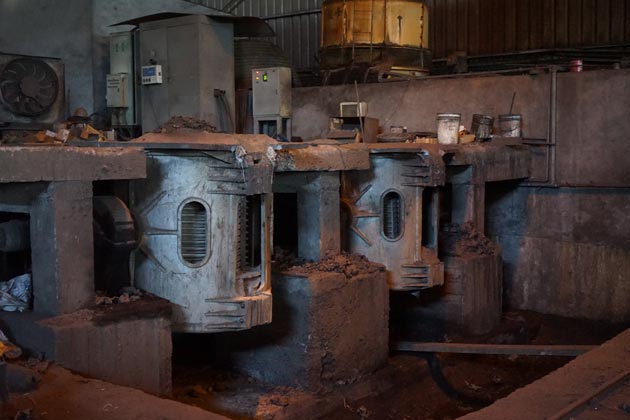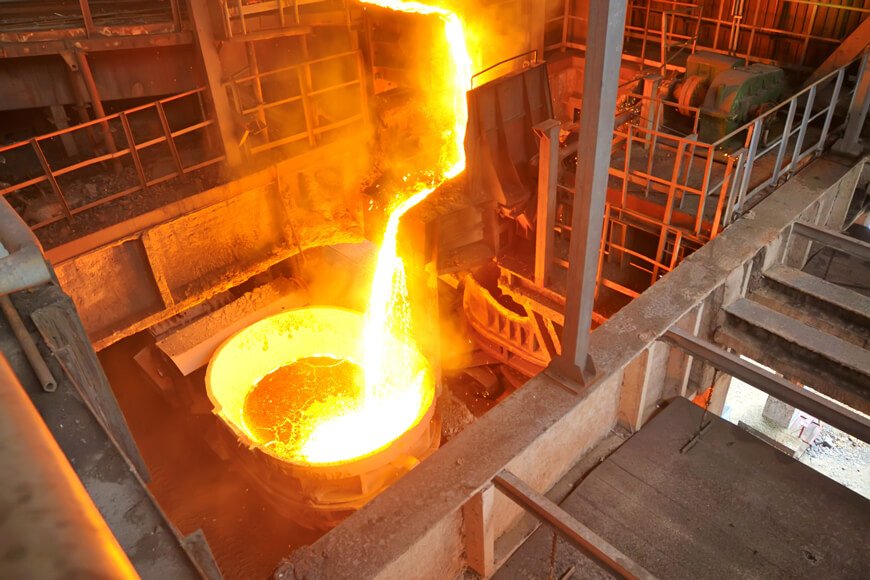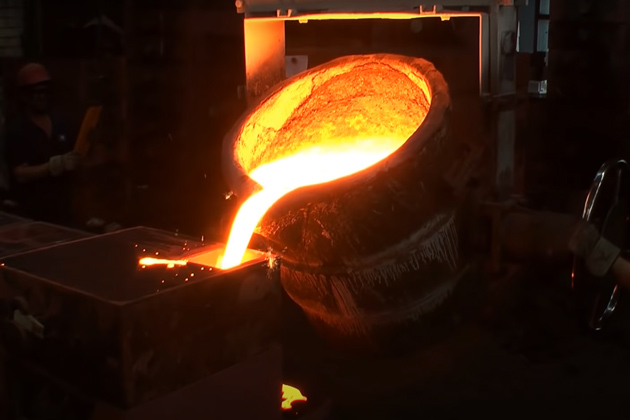Discover the Cutting-edge Methods Made Use Of in a Metal Foundry for Superior Casting Results
In today's affordable manufacturing landscape, metal foundries are increasingly embracing cutting-edge techniques to boost spreading results - Metal Casting. Advanced computer simulations permit specific modeling of molten metal behavior, while 3D printing enables fast production of intricate molds. Furthermore, environmentally friendly products and automation improve operations. These growths promise substantial renovations in performance and top quality control. The effect of these modern technologies on sustainability and production methods continues to be to be totally explored.
Advanced Computer Simulations in Metal Casting
Advanced computer system simulations have actually changed the metal spreading process by improving precision and performance. These advanced tools enable engineers to produce online designs of actors components, enabling them to anticipate the habits and examine of molten metal during the spreading stage. By imitating numerous criteria such as temperature, flow price, and air conditioning rates, manufacturers can identify possible flaws before physical manufacturing starts.
This positive method reduces waste and decreases expensive errors, eventually resulting in boosted product high quality. Furthermore, simulations promote the optimization of mold designs, making sure that they fulfill the details requirements of each project. The assimilation of computational fluid dynamics (CFD) and finite component analysis (FEA) additional adds to the accuracy of these simulations, providing understandings that were formerly unattainable. As an outcome, advanced computer simulations have ended up being an essential element of modern metal foundries, substantially advancing the sector's abilities.
3D Printing for Molds and Patterns
3D printing has emerged as a groundbreaking method for producing molds and patterns in the metal foundry sector. This modern technology enables the quick manufacturing of complicated geometries that standard production methods battle to attain. By using additive manufacturing, foundries can produce complex layouts with minimized preparations and material waste. The capability to generate mold and mildews as needed enables better versatility in design iterations, helping with faster prototyping and modifications.
Additionally, 3D printing can use a variety of materials, consisting of metals and plastics, tailored to particular casting needs. This flexibility improves the precision of mold and mildews, causing superior spreading outcomes with improved surface area coatings. Furthermore, the reduction in the number of parts needed simplifies setting up procedures, further maximizing production efficiency. As foundries continue to take on 3D printing, they are positioned to redefine market standards, paving the means for development and boosted productivity in metal casting operations.
Eco-Friendly Products and Processes
As the metal foundry sector encounters raising stress to minimize its environmental impact, the fostering of environment-friendly materials and procedures has actually ended up being important. Shops are now checking out lasting options to standard products, such as using bio-based binders and recycled steels. These products not only lessen waste yet likewise lower power usage during manufacturing.
Additionally, advancements in sand spreading techniques have actually resulted in the usage of synthetic sands that are much less damaging to the atmosphere. Shops are likewise applying ingenious processes like molten metal treatment that reduces emissions and improves the top quality of cast items.
Water-based coverings have replaced toxic solvents, advertising a safer work setting. By integrating these eco-friendly techniques, metal foundries can substantially reduce their ecological effect while keeping premium spreading outcomes. This shift not just profits the atmosphere yet additionally lines up with the growing consumer need for lasting production services
Automation and Robotics in Foundry Workflow
While the metal foundry sector accepts development, the assimilation of automation and robotics is changing procedures greatly. Automated systems enhance processes such as mold production, metal pouring, and casting ending up, greatly improving efficiency. Robotics facilitate the handling of hefty materials, decreasing the threat of work environment injuries and making sure much safer settings.

Better, making use of automated directed cars (AGVs) optimizes material transport see this within facilities, guaranteeing timely shipment of elements to suitable workstations. By carrying out these modern technologies, foundries can adjust to fluctuating needs with greater agility, ultimately leading to boosted success and competition on the market. As navigate to this website automation and robotics remain to evolve, they hold the potential to redefine typical foundry methods and drive further improvements in casting techniques.
Real-Time Surveillance and Quality Assurance Techniques
The developments in automation and robotics have actually led the means for much more advanced strategies to high quality guarantee in metal foundries. Real-time monitoring systems make use of advanced sensing units and information analytics to track critical parameters throughout the casting process. These systems continuously evaluate variables such as stress, temperature, and material structure, enabling immediate discovery of variances from developed standards.
Quality control techniques now include artificial intelligence formulas that assess historic information to predict possible issues before they happen. This positive strategy lessens waste and enhances overall manufacturing efficiency. Furthermore, integrated comments loopholes permit rapid changes, making certain that each casting satisfies stringent top quality demands.
The implementation of digital doubles-- virtual replicas of physical assets-- has also reinvented high quality guarantee, enabling designers to mimic and enhance procedures in real-time. Together, these innovative methods greatly boost the dependability and high quality of castings, establishing new industry criteria in metal foundry procedures.
Often Asked Concerns
What Kinds of Metals Are Commonly Cast in Shops?
Typically cast metals in foundries consist of aluminum, brass, iron, and bronze. Each metal displays special homes, making them appropriate for different applications, anonymous such as automotive parts, machinery, and imaginative sculptures, enhancing their adaptability in production.

How much time Does the Casting Process Usually Take?
The casting procedure normally takes a number of hours to days, depending upon elements such as the intricacy of the mold and mildew, kind of metal utilized, and cooling demands. Each phase influences the overall period noticeably.
What Precaution Remain In Place for Foundry Employees?

Just how Are Problems in Castings Identified and Addressed?
Flaws in castings are identified with visual examinations and non-destructive screening methods. Once detected, foundry workers resolve them by refining procedures, readjusting material compositions, and carrying out rehabilitative procedures to ensure top quality and compliance with criteria.
What Is the Expense Array for Metal Casting Providers?
The cost variety for metal spreading solutions usually ranges $1 to $10 per extra pound, depending upon factors such as product type, intricacy of the layout, and production volume, impacting total prices significantly.
In today's affordable production landscape, metal foundries are significantly adopting ingenious methods to boost spreading results. As the metal foundry market faces increasing pressure to reduce its environmental impact, the adoption of eco-friendly products and processes has actually become crucial. Shops are now discovering lasting alternatives to standard products, such as making use of recycled steels and bio-based binders. By integrating these environmentally friendly techniques, metal foundries can considerably reduce their eco-friendly effect while preserving high-grade spreading results. The advancements in automation and robotics have actually led the means for much more advanced techniques to quality guarantee in metal foundries.